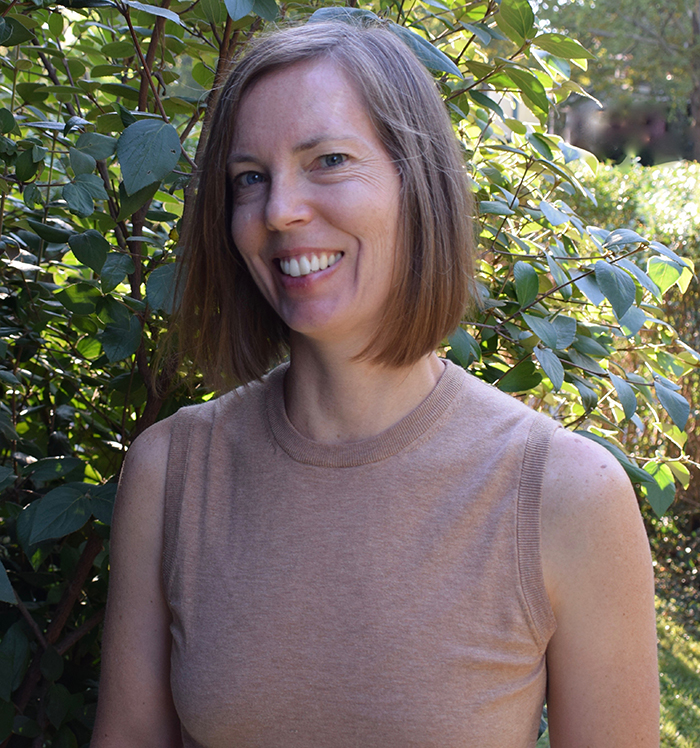Jennifer Suchland
Contributing Scholar and Activist, Co-Director Livable Futures 2018-2021
Slavic and East European Languages and Cultures and Women’s, Gender and Sexuality Studies, The Ohio State University
Dr. Suchland, helped conceptualize Livable Futures and focuses on collaborative pedagogical practices and the vexed role/future of human rights.
Biography
I don’t really have a disciplinary home but I have been highly motivated by certain questions and ways of thinking. My research and ethical commitments are to a critical study of law and rights categories as they are culturally and transnationally entangled. I remember reading Denise Riley’s Am I That Name? and Cindy Patton’s Globalizing AIDS over and over when I was a graduate student because I was drawn to how they formulated and answered their research questions. How do rights categories emerge and evolve and what is at stake in those articulations? I asked those questions in my first book, Economies of Violence: Transnational Feminism, Postsocialism, and the Politics of Sex Trafficking (Duke University Press, 2015). In that project, I crafted a genealogy of global human trafficking discourses in and through the end of the Cold War. I was most interested in what dynamics and ideas animated the re-emergence of the problem of human trafficking after the collapse of Soviet state socialism. I focused on the evolution of global women’s rights discourses, in particular the formation of the composite category called “violence against women.” I also traced shifts in development discourses as the countries undergoing capitalist transition were incorporated into and helped reshape global precarity. My research traversed the archives of the United Nations, U.S. congressional hearings, and years of fieldwork in Russia and Europe.
That project put me in conversation with authors and activists in critical human rights. The word critical in critical human rights means two things to me. One, that the apparatus of rights as a mechanism that both names and adjudicates harm is deeply suspect and indeed also a source of violence. Second, that the idea of the human invoked in human rights also is suspect because the idea was born out of colonial logics that named the “human” as the rights bearing/consuming subject of white cis-heteropatriarchal state forms. Marking that human as the primary subject validated settler colonialism, Black enslavement, and extractive environmental relations and created a competitive regime for individual rights. Can human rights work un/re/do colonial relations? What harm or good are human rights when the problem is the human?
Such questions inform my current project which examines the contemporary moniker “modern day slavery” as a discourse of redemption and as embedded in what I aim to describe as processes of domesticating violence.
Q & A
What makes more livable futures for you?
Ironically, my engagement with livable futures has me asking questions about the past. I am also learning about what it means to be situated in Ohio. Locating myself in Ohio has meant studying the taking of this land and the forced violent removal of its first peoples and how those past events are active in the present through such things as unnoticed river and city names, racist sport team mascots, and battles over land and protected sacred spaces. Where are the living and the dead? What inheritance is there to working at a land grant university? For me, thinking about the present and imaging the future requires wrestling with such questions. The slippage of temporality between the past and present is at the center of the idea of “modern day slavery” because it both supposes the passing of new world slavery but calls upon it to define the present. I am interested in what allows for that slippage, what fills the gap, and what is left behind.
The future has always been a temporality for the privileged and that will only intensify as resources get scarcer, damaged, and highly policed. I do not imagine “livable futures” as actually possible because there hasn’t yet been a livable present. But I do take it as a kind of science fiction provocation to imagine, reflect and think especially at a time when data and information are generated ad infinitum. I also want to think about a past conditional temporality, what could have been, as a way to imagine possible futures. I have another project looking into the transnational solidarities between state socialism and radical diasporic Black feminists such as Claudia Jones.
What are you reading, viewing, listening to right now?
There are texts that are informing how I think, such as Saidiya Hartman’s Scenes of Subjection, Jodi Byrd’s The Transit of Empire, and Anna Tsing’s The Mushroom at the End of the World. And, there are books with prose that I cherish, including Saidiya Hartman’s Lose Your Mother, Layli Long Soldier’s WHEREAS, and Trinh T. Minh-ha’s Lovecidal. I am reading memoirs, a genre I’ve never explored before, including slave narratives from the 19th and early 20th century as well as the contemporary genre of trafficking narratives (both written and filmic). Memoirs for locating and interrogating my positionality as a descendent of settlers and now living in Ohio (and the mid-west in general) include Nora Murphy’s White Birch, Red Hawthorn and Aldo Leopold’s Sand County Almanac. I’m listening to mashup of piano with Jason Moran, electronic with FKA twigs, and singing when no one is listening to Janelle Monáe and Patty Griffin.
What practices are sustaining you?
Always my family, as my daughter and partner ground me in the present moment and center love in the everyday. I don’t think I deeply understand gratitude and so I strive to cultivate that. As a queer, feminist, white cis-woman I am motivated by a desire to make change and be accountable, but also to not take up space and demand to be the center. I’m learning about the non-human life around me, including things like wild ginger, and so I like being outside whether in my back yard, the bike path, or street alleys (cuz that is where the free stuff is).
